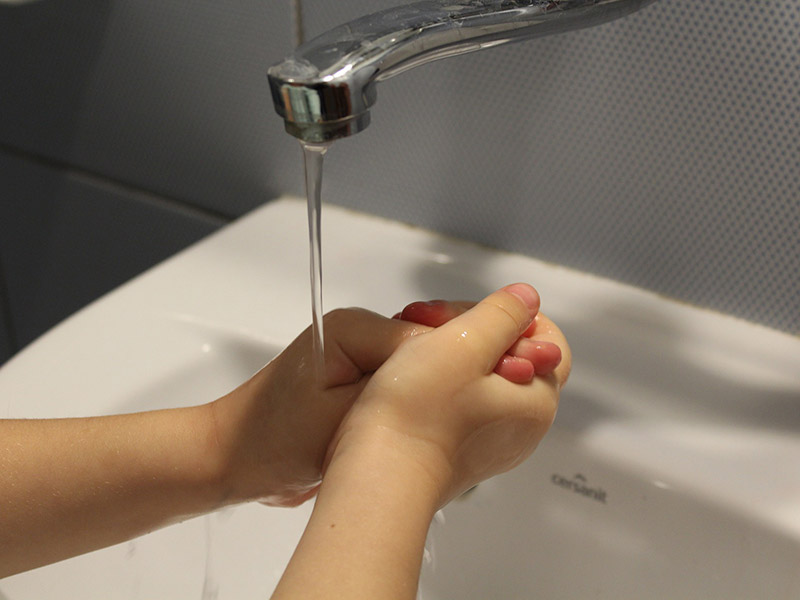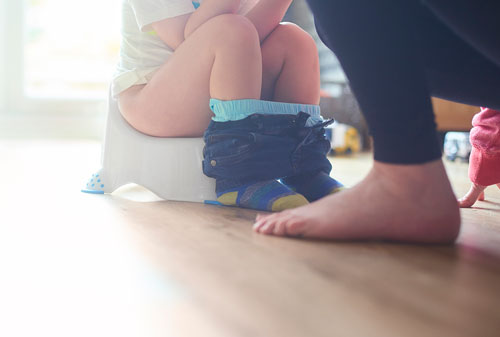




Developing good hygiene habits are vitally important to children's ongoing health and well-being.
Parents need to ensure children:
Beyond their health promotion functions, good personal hygiene habits help children present an attractive appearance to the world, which in turn influences how they are perceived and treated by others and will help develop healthy self-esteem.
It is important that parents both teach and model good hygiene habits.
Parents should teach children the mechanics of washing their hands after using the toilet and before meals. They should wash the top and bottom of their hands as well as between their fingers before rinsing.
Once teeth start to come through, parents should begin brushing their baby’s with a soft toothbrush and a rice size amount of fluoride toothpaste. To encourage brushing, babies and toddlers should be allowed to hold the toothbrush and chew on the bristles. Around the age of 2 or 3 years, children should begin to learn how to gently brush back and forth before spitting into the sink. Once the child reaches school age, they should be able to wet the toothbrush and add toothpaste independently.
Whilst young children should be supervised in the bath for safety reasons, they should still be taught how to wash themselves and rub shampoo into their hair before rinsing. They may need help with these tasks, but parents can use their judgement on how much their child is able to do for themselves.
This can take time to master as young children will find it difficult to reach the top of their head with a brush. Spritzing the hair with water and using a wide toothed comb/brush can assist children with getting the tangles out of their hair.
Mae datblygu arferion hylendid da yn holl bwysig er mwyn sicrhau iechyd a llesiant parhaus plant.
Mae angen i rieni sicrhau bod plant yn gwneud y canlynol:
Y tu hwnt i swyddogaethau hybu iechyd, mae arferion hylendid personol da yn helpu plant i ymddangos yn ddeniadol i'r byd, sydd yn ei dro yn dylanwadu ar y canfyddiadau ohonyn nhw a sut y bydd pobl eraill yn eu trin. Bydd hefyd yn helpu i ddatblygu hunan-barch iach.
Mae'n bwysig bod rhieni yn addysgu ac yn modelu arferion hylendid da.
Dylai rhieni addysgu eu plant i olchi eu dwylo ar ôl mynd i'r toiled a chyn prydau bwyd. Dylen nhw olchi top a gwaelod eu dwylo yn ogystal â golchi rhwng eu bysedd cyn rinsio.
Unwaith y bydd y dannedd yn dechrau ymddangos, dylai rhieni ddechrau brwsio dannedd eu baban â brwsh dannedd meddal a phâst dannedd fflworid maint gronyn o reis. Er mwyn eu hannog i frwsio, dylid caniatáu i fabanod a phlant bach ddal y brwsh dannedd a chnoi'r blew. Oddeutu 2 neu 3 oed, dylai plant ddechrau dysgu sut i frwsio'n ysgafn yn ôl ac ymlaen cyn poeri i mewn i'r sinc. Unwaith y bydd y plentyn yn cyrraedd oedran ysgol, dylai allu gwlychu'r brwsh dannedd ac ychwanegu pâst dannedd ar ei ben ei hun.
Er y dylid goruchwylio plant ifanc yn y bath am resymau diogelwch, dylid eu haddysgu i olchi eu hunain a rhwbio siampŵ i mewn i'w gwallt cyn ei rinsio. Mae'n bosibl y bydd angen help arnyn nhw wrth ymgymryd â'r tasgau hyn, ond gall rhieni arfer synnwyr cyffredin o ran faint y gall eu plentyn ei wneud drosto'i hun.
Gall hyn gymryd amser i'w feistroli gan y bydd plant bach yn ei chael hi'n anodd cyrraedd top eu pen â brwsh. Gall chwistrellu'r gwallt â dŵr a defnyddio crib dannedd llydan/brwsh helpu plant i gael y clymau allan o'u gwallt.
| QuestionCwestiwn | Your ResponseEich Ymateb | Suggested ResponseYmateb Awgrymedig |
|---|

Most children can control their bowels before their bladder, and the age that they are able to do so varies from child to child.
On average, children:
Gall y rhan fwyaf o blant reoli eu coluddyn cyn eu pledren, ac mae'r oedran y gallan nhw wneud hynny yn amrywio o blentyn i blentyn.
Ar gyfartaledd:
Use the thought shower to note ways in which parents can train their child to be independent in going to the toilet by themselves.
Defnyddiwch y gawod syniadau i nodi sut y gall rhieni ddysgu eu plant i fod yn annibynnol wrth ddefnyddio'r toiled ar eu pen eu hunain.